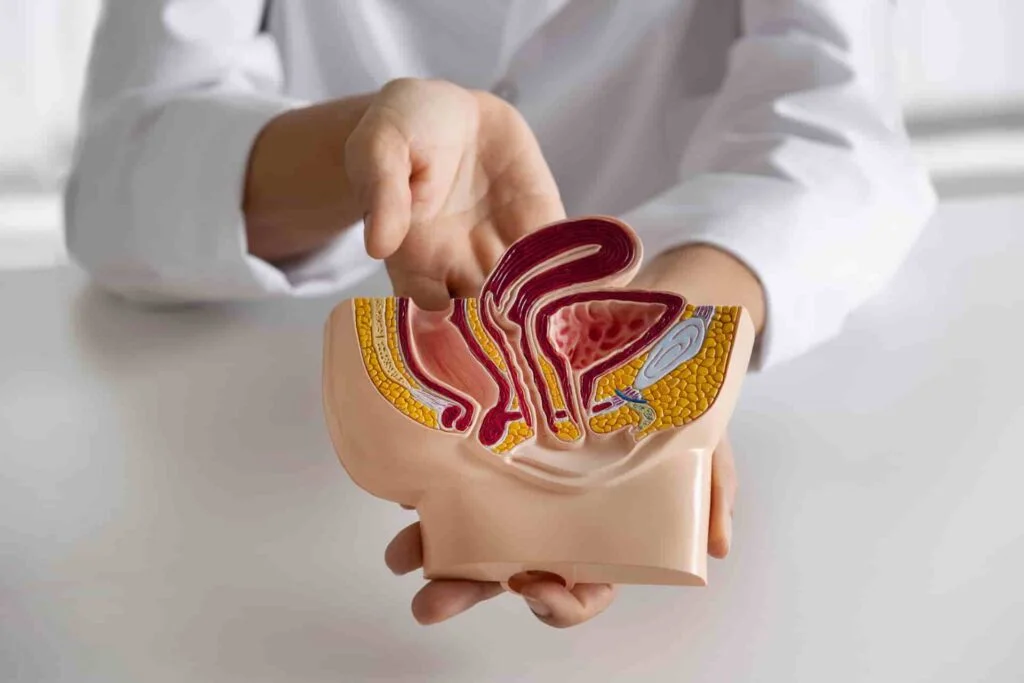iles and fistulas are common anorectal conditions that affect a significant portion of the population. Although they both affect the anal region, piles (also known as hemorrhoids) and fistulas are different conditions with unique causes, symptoms, and treatment options. Dr. Hemant Garg, a piles docotr in Jaipur, often sees patients who are unclear about the distinction between these two conditions. This article aims to clarify the differences between piles and fistulas and explore the available treatment options.
What Are Piles?
Piles, or hemorrhoids, are swollen blood vessels in the lower rectum and anus, caused by increased pressure in these veins. They can be internal (inside the rectum) or external (under the skin around the anus). While piles can cause discomfort and inconvenience, they are usually manageable with lifestyle changes and medical treatment.
Causes of Piles
Several factors contribute to the development of piles, including:
- Chronic constipation or diarrhea: Straining during bowel movements increases pressure on the rectal veins.
- Sedentary lifestyle: Sitting for long periods, especially on the toilet, can exacerbate piles.
- Pregnancy: The weight of the fetus places extra pressure on the veins in the lower abdomen, increasing the likelihood of piles.
- Obesity: Excess weight can put additional pressure on the lower rectum.
- Heavy lifting: Frequently lifting heavy objects also increases abdominal pressure.
Symptoms of Piles
The symptoms of piles vary depending on their location and severity:
- Internal piles: These are generally painless but may cause bleeding during bowel movements. In severe cases, they may prolapse outside the anus, causing discomfort.
- External piles: These can cause pain, itching, and discomfort, as they are under the skin around the anus and can become irritated or thrombosed (clotted).
Common symptoms associated with piles include:
- Bright red blood after a bowel movement
- Itching or irritation in the anal region
- Pain or discomfort, especially when sitting
- Swelling or a lump near the anus
Treatment for Piles
Treatment for piles depends on the severity and type of piles. For mild cases, lifestyle modifications are often effective. More severe cases may require medical or surgical intervention.
- Lifestyle Changes and Home Remedies:
- Diet: Increasing fiber intake can soften stools, making bowel movements easier and less painful.
- Hydration: Drinking enough water helps prevent constipation.
- Warm Sitz Baths: Sitting in warm water several times a day can soothe pain and reduce inflammation.
- Topical Treatments: Over-the-counter creams and ointments can relieve itching and pain.
- Medical Treatments:
- Rubber Band Ligation: A small rubber band is placed around the base of the hemorrhoid, cutting off its blood supply and causing it to shrink.
- Sclerotherapy: A chemical solution is injected into the hemorrhoid, causing it to shrink over time.
- Infrared Coagulation: Infrared light is used to cut off blood flow to the hemorrhoid.
- Surgical Treatments:
- Hemorrhoidectomy: Surgical removal of large external hemorrhoids or prolapsed internal hemorrhoids.
- Stapled Hemorrhoidopexy: A circular stapling device removes hemorrhoid tissue and staples the remaining tissue back into place.
What Is a Fistula?
An anal fistula is an abnormal connection between the inner part of the anus and the skin around it. It typically develops after an abscess (infection in an anal gland) that fails to heal completely, leaving a tract or tunnel that connects the infected gland to the outer skin. Unlike piles, fistulas require medical attention and often surgical intervention due to the risk of recurrent infection.
Causes of Fistulas
Anal fistulas are generally caused by an abscess in the anal gland, but other factors may contribute, such as:
- Crohn’s Disease: This inflammatory bowel condition can lead to chronic inflammation and abscess formation, increasing the risk of fistula development.
- Diverticulitis: Inflammation in the intestines can lead to abscesses that form fistulas.
- Trauma or Surgery: Injuries or previous surgeries in the anal region can also contribute to fistula formation.
Symptoms of Fistulas
The symptoms of an anal fistula can include:
- Pain: Persistent pain that often worsens during bowel movements.
- Swelling and Redness: The area around the anus may become swollen, red, and tender.
- Pus or Blood Discharge: The fistula may produce foul-smelling discharge, such as pus or blood.
- Recurring Abscesses: Recurrent abscesses or painful lumps near the anus are common in individuals with fistulas.
- Fever and Fatigue: In cases of infection, fever, and general fatigue may also occur.
Treatment for Fistulas
Due to the risk of infection, fistulas typically require surgical treatment. Home remedies are usually ineffective in treating this condition.
- Surgical Treatments:
- Fistulotomy: This procedure involves cutting open the entire length of the fistula to allow it to heal from the inside out, a common treatment for simple fistulas.
- Seton Placement: For complex fistulas, a seton (medical thread) is placed to keep the tract open and allow drainage, facilitating healing without damaging the surrounding muscles.
- Advancement Flap Procedure: In some cases, a tissue flap is created to cover the internal opening of the fistula, promoting healing.
- Fibrin Glue or Collagen Plug: For patients who cannot undergo surgery, fibrin glue or a collagen plug may be used to seal the fistula tract.
- Medication:
- Antibiotics may be prescribed to address any underlying infection, particularly in patients with inflammatory conditions like Crohn’s disease.
Key Differences Between Piles and Fistulas
| Aspect | Piles (Hemorrhoids) | Fistulas |
|---|---|---|
| Location | Swollen veins in the rectal or anal region | Abnormal tract between anal canal and skin |
| Cause | Pressure on veins (constipation, pregnancy) | Infection, abscess, Crohn’s disease |
| Symptoms | Itching, pain, bleeding, prolapse | Pain, pus discharge, fever, abscess |
| Treatment Options | Lifestyle changes, creams, surgery | Primarily surgical (fistulotomy, seton) |
When to Consult Dr. Hemant Garg
If you’re experiencing symptoms of piles or suspect you have a fistula, consulting a specialist like Dr. Hemant Garg in Jaipur can be instrumental in obtaining an accurate diagnosis and effective treatment plan. As an expert in piles and anorectal conditions, Dr. Garg provides tailored care to alleviate symptoms, prevent complications, and improve quality of life.
Conclusion
While piles and fistulas both impact the anal region, they are distinct conditions with unique causes, symptoms, and treatments. Piles are swollen blood vessels that can often be managed with lifestyle changes and minor procedures, while fistulas are abnormal tracts usually caused by infection and often require surgical intervention.
For those experiencing anal discomfort, bleeding, or persistent pain, seeking medical attention is crucial. An accurate diagnosis from a specialist like Dr. Hemant Garg can ensure timely and appropriate treatment, providing relief from symptoms and improving overall health.










